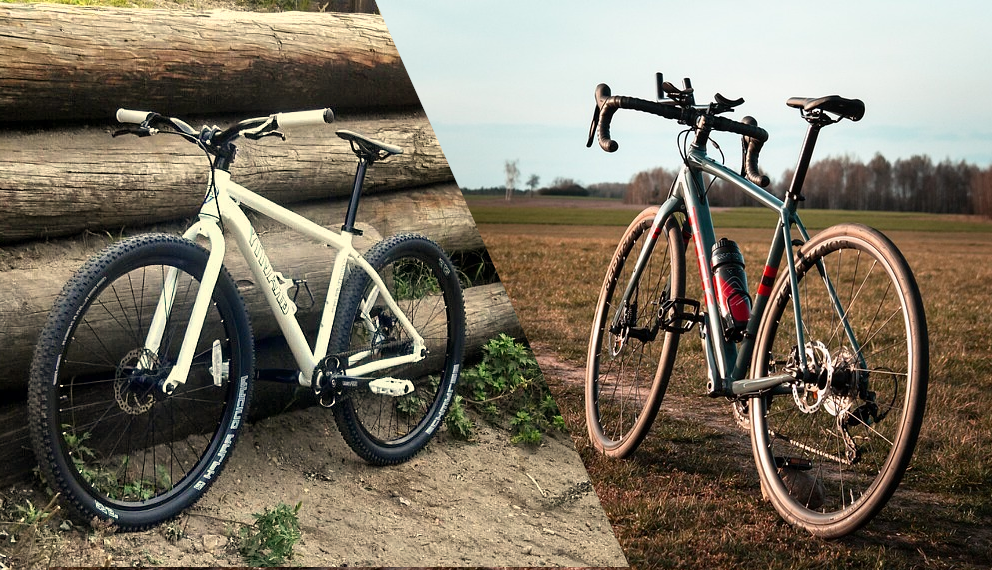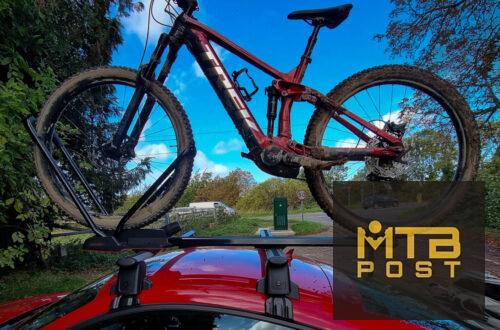
Rigid MTB Vs Gravel Bike: Everything You Need To Know
Gravel bikes have become very popular over the last few years. They bridge the gap between a road bike and a modern day mountain bike. But with the possibility to fit tires up to 50 mm on a gravel bike, isn’t a gravel bike and a rigid mountain bike the same thing?
Rigid MTBs and gravel bike are quite similar, but there are a few key differences. Gravel bikes lean more towards road bikes, but are also capable of riding on country roads. Rigid mountain bikes don’t feel at home on pavement, but are setup for more technical and challenging off-road cycling.
In this article, we’ll look at the differences between a rigid mountain bike and a gravel bike. This will help you in choosing the right bike for you!
What’s A Rigid Mountain Bike?
A rigid mountain bike is a mountain bike with no suspension at all. The only form of dampening comes from the tires. You’ll sometimes hear terms like ‘semi-rigid’, which refers to a hardtail mountain bike; a bike with a front suspension only.
The first mass produced mountain bike was a rigid bike. It was not up until the early 90’s that suspension made an appearance on MTBs. This opened up to opportunity to ride mountain bikes faster and more extremely. Since than, the technology of suspension has evolved massively.
Nowadays, rigid bikes aren’t common. Which isn’t a strange phenomenon when you think about how much easier mountain biking has become since the invention of suspension. Riding a rigid mountain bike fast on a technical trail, takes a lot more skill than on a hardtail or full-suspension bike. Having no suspension means that the tires are more likely to loose grip on bumps.
Although you don’t see a rigid mountain bike very often, they still serve a purpose. It might not be the best bike for the coolest stunts, but it is a great match for longer, less extreme rides on technical trails or singletracks. The skill that you develop on a rigid bike, will help you become a better mountain biker!
There are a few advantages in having a rigid mountain bike over a hardtail or full-suspension bike. A rigid bike is lighter, less expensive and easier to maintain.
What’s A Gravel Bike?
A gravel bike fills the gap between a road bike and a mountain bike. It is often chosen by road cyclists as it shares a lot of similarities with a road bike, but opens up the opportunity to ride off-road. In comparison to a road bike, a gravel bike has different geometry and wider tires.
Gravel cycling hasn’t been around for that long; the first gravel race was held in 2006. Since then, the sport has gained a lot of popularity. The setup and technology of gravel bikes is influenced by road bikes, mountain bikes and cyclocross bikes. Riding a gravel bike is a bit like riding an old rigid mountain bike.
Visually, a gravel bike looks a lot like a road bike; it has drop handlebars for an aerodynamic riding position. But other than that, it is very different. First of all, there’s a lot more tire clearance for fitting wider, off-road tires. The latest gravel bikes can fit tires up to 50 mm wide.
Second, the geometry is slightly less aerodynamic than on a road bike because of a longer head tube. The more upright position makes it easier for the rider to move his weight around for balance on rough surfaces.
And last, the gearing of a gravel bike is shorter than on a road bike, but longer than a mountain bike. For this reason, it will not be the fastest bike on the pavement, but you will be able to tackle steep off-road climbs. Brands like Sram and Shimano actually offer gravel-specific gearing.
More about gravel bikes and how to convert a road bike to a gravel bike, in my article: Can You Put Mountain Bike Tires On A Road Bike?
Rigid MTB Vs Gravel Bike: The Differences
In the previous section we’ve established that a rigid mountain bike and a gravel bike is actually quite similar. Is the gravel bike a reincarnation of the old rigid mountain bike but with drop handlebars? Let’s look at the difference in detail.
Geometry
The geometry of a gravel bike is more aerodynamic than a mountain bike. That’s because a gravel bike has a steeper head tube angle and shorter wheels base. This makes a gravel bike feel more agile than an MTB, but it can make the bike feel more nervous on steep descents.
Drop handlebars on a gravel bike offer a lot more freedom in hand position. The rider can easily switch from an aerodynamic riding position on tarmac, to a more active and upright position off-road.
Tires
Even though you can fit some wide tires on a gravel bike, you can go even wider on a rigid mountain bike. A gravel bikes allows you to fit tires up to 50 mm, whereas on a mountain bike, you can fit tires up to 2.6” (66 mm).
Wider tires have a larger contact surface which makes it easier to ride over loose surfaces like sand. Also, mountain bike tires offer more grip because of the more aggressive thread pattern.
Drivetrain
Modern day rigid mountain bikes have 1x drivetrains with a small chainring and a wide range cassette. Although this is great for tackling almost any steep climb, you’ll soon run out of gears on tarmac. Gravel bikes however, can have 2x drivetrains with a smaller range cassette. This is a great setup for riders that want to use their gravel bikes on road as well as on technical trails with climbs.
The way you shift on a gravel bike is different from a mountain bike, but the same as on a road bike. A mountain bike has separate levers which are located on the end of the handlebars. The shift levers on a road bike are located on the hoods and are built in to the brake levers.
Rigid MTB Vs Gravel Bike: What To Go For?
Even though the difference between a rigid MTB and a gravel bike isn’t big, it’s not impossible to define.
A rigid mountain bike brings you back to the root of mountain biking. It may not be the most comfortable or fastest ride, but you sure will learn a lot riding one. There is no suspension to smoothen a rough trail, but that’s part of the game. Keeping your balance and choosing the right line makes riding a rigid bike challenging and fun.
But fact is, it is a genuine mountain bike that will feel most at home on cross-country-style trails. Riding one on pavement can be done and is often inevitable, but not ideal. The wider tires, gearing and riding position make the bike slow under these conditions.
Gravel bikes lean more toward road cycling. Not only because of of their visual appearance, but also because of their riding position. The freedom in riding position makes them versatile and a perfect match for someone that does not want to limit themselves to purely road cycling.
As with anything, there is no bike than can do it all. Although gravel bikes are quite capable off-road, they can’t go as extreme as a mountain bike can.
The conclusion is: if you like mountain biking and don’t spend a lot of time on pavement, get a rigid mountain bike. If you want to go for longer rides on pavement as well as off-road on light singletracks, forest trails and gravel roads, get a gravel bike.





